I'll never forget the first time I learned to make Paksiw na Pata, it was from Aling Norma, our elderly neighbor in Pilar, Bataan, who became my second Lola. Every Sunday, the aroma of vinegar and garlic would smell from her kitchen, drawing everyone who passes by to peek through her window.
One rainy afternoon, she finally invited me in and shared her 40-year-old recipe, passed down from her own mother in Pangasinan. Today, I'm sharing her secrets to creating the most tender, fall-off-the-bone pork hocks (pata ng baboy) swimming in that signature tangy-sweet sauce that only hours of patient simmering can achieve.
This isn't just another Paksiw na Pata recipe, it's a piece of Filipino comfort that reminds me of Pinoy family gatherings, the sound of happy chatter, and rice cookers clicking to "warm" just as the pata reaches that perfect tenderness.
Believe me, once you master this paksiw na pata recipe, it'll become your family's new favorite, too.
Jump to:

Why You'll Love This Recipe
- Fall-off-the-bone tender meat that melts in your mouth
- Rich, complex sauce balancing savory, tangy, and sweet flavors
- One-pot comfort food perfect for family gatherings
- Better the next day as flavors develop further
- Budget-friendly cut transformed into a luxurious dish
- Authentic Filipino recipe with modern cooking methods
Ingredients
This recipe combines carefully selected ingredients that work together to create the magic of Paksiw na Pata. Pork hocks are ideal because their high collagen content breaks down during slow cooking, creating melt-in-your-mouth tenderness. Vinegar and soy sauce form the traditional paksiw base, with vinegar acting as both a flavor agent and natural preservative.
Brown sugar balances the acidity while dried banana blossoms add authentic texture and subtle sweetness. The aromatics — garlic, onions, bay leaves, and peppercorns — infuse the broth with complex flavors that penetrate the meat during braising.
Together, these ingredients transform a humble cut into a rich, deeply flavorful Filipino comfort food that has stood the test of time.
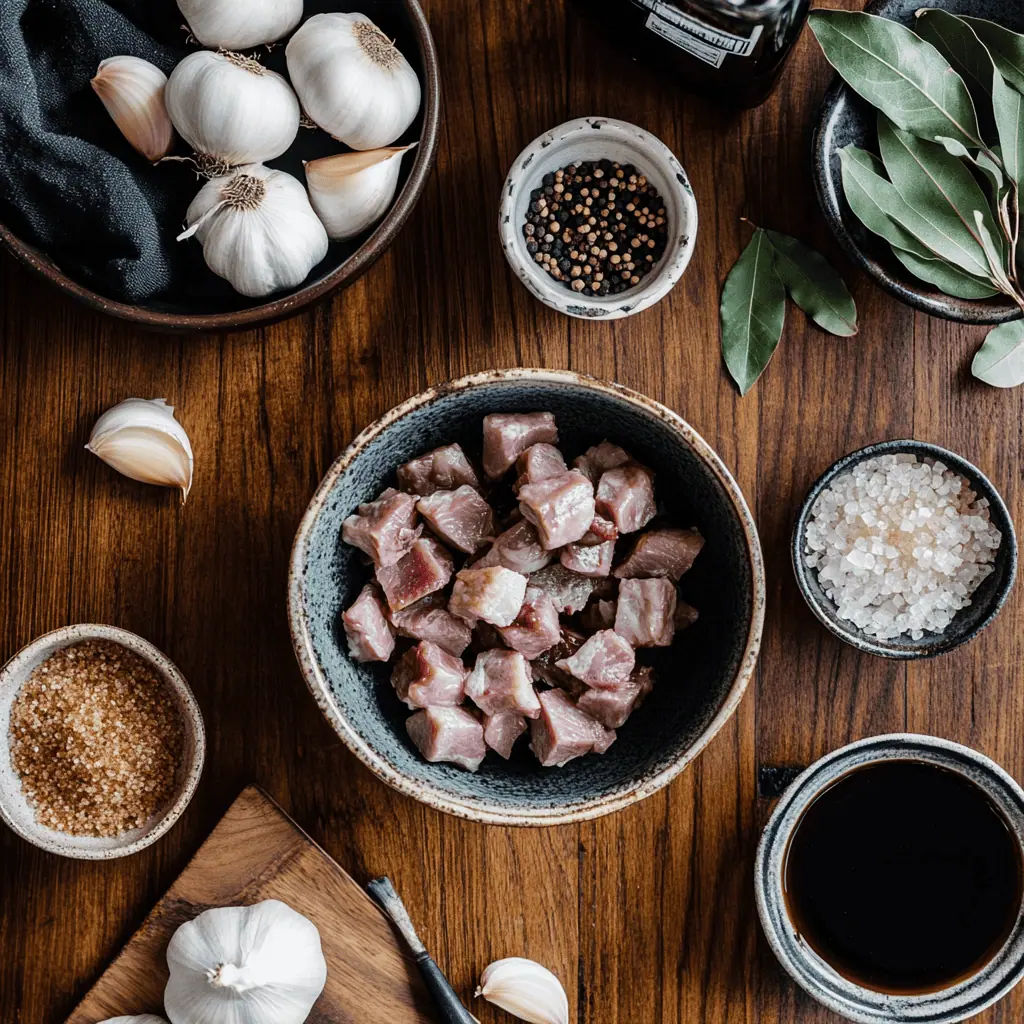
For the Main Dish:
- 2 pounds pork hocks (pata), cut 2-inch thick
- 1 cup white vinegar
- ½ cup soy sauce
- 2 cups water
- ¼ cup brown sugar
- ½ cup dried banana blossoms
- 1 tablespoon cooking oil
For the Aromatics:
- 1 large onion, sliced
- 6 cloves garlic, minced
- 2 bay leaves
- 1 teaspoon whole peppercorns
- Salt to taste
Equipment
- Large heavy-bottomed pot (kaldero) - Ensures even heat distribution and prevents burning
- Sharp knife (kutsilyo) - For scoring the pork skin to help flavors penetrate
- Tongs (sipit) - For safely turning hot meat without puncturing it
- Measuring cups and spoons (panukat) - For accurate measurements
- Wooden spoon (sandok na kahoy) - For stirring without scratching the pot
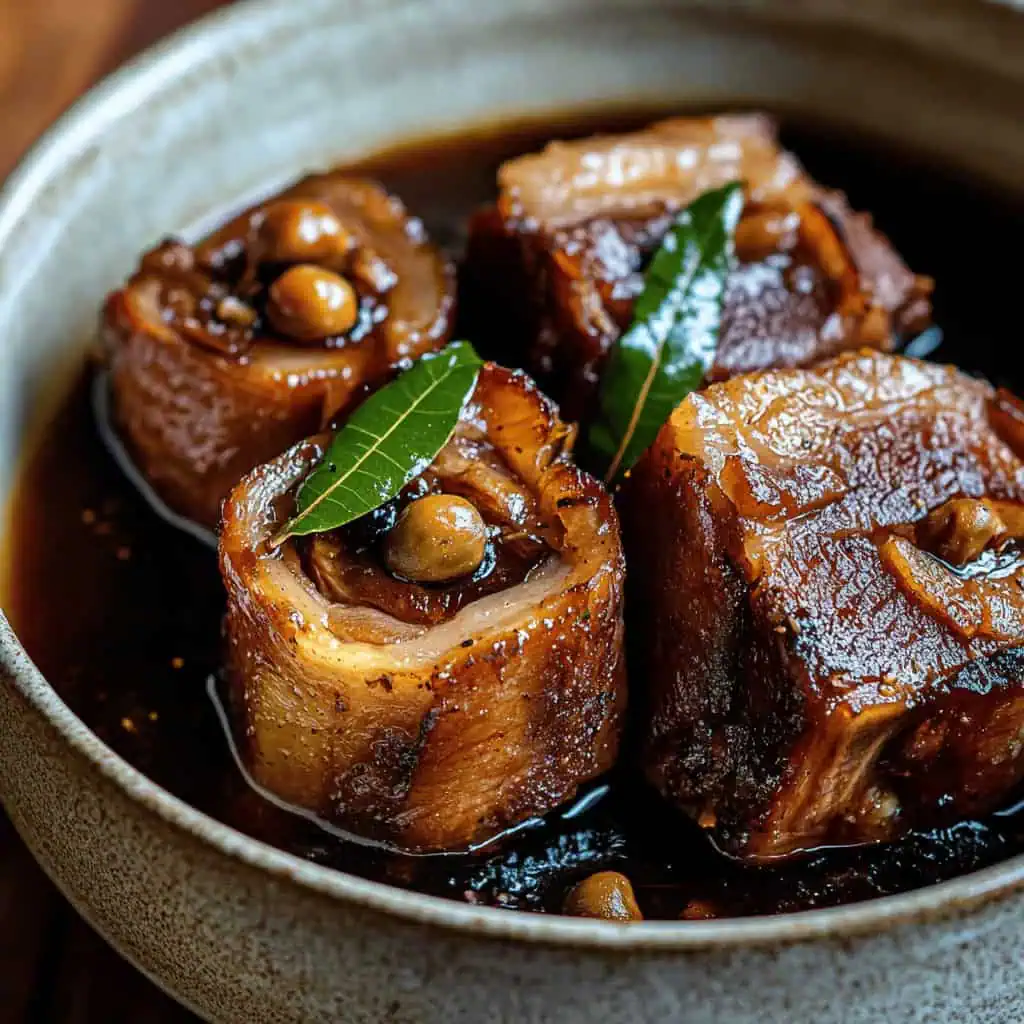
How To Make
- Clean pork hocks thoroughly and score the skin in a crosshatch pattern. Pat dry with paper towels. Allow meat to reach room temperature.
- Heat oil in a large heavy-bottomed pot over medium-high heat (190°C/375°F). Brown pork hocks on all sides until golden, about 5-7 minutes per side. Remove and set aside.
- Reduce heat to medium (165°C/330°F). In the same pot, sauté minced garlic until fragrant, about 1 minute. Add sliced onions and cook until translucent, 3-4 minutes.
- Return pork to pot and add vinegar. Bring to a boil without stirring for 3-4 minutes. Add soy sauce, water, bay leaves, and peppercorns.
- Reduce heat to low (140°C/285°F). Cover and simmer for 1.5-2 hours, checking liquid levels every 30 minutes. The meat should become fork-tender.
- Add brown sugar and dried banana blossoms. Increase heat to medium-low (150°C/300°F) and simmer uncovered until sauce thickens, about 15-20 minutes. Season with salt to taste.
- Let rest for 10 minutes before serving. Serve hot with steaming white rice.

Tips from Lola's Kitchen
- Choose pork hocks with skin on for better texture and flavor development
- Don't skip the browning step - it creates a deeper, more complex flavor base
- When adding vinegar, don't stir immediately (hayaang kumulo) to allow it to release its harshness
- Score the skin in a diamond pattern to help flavors penetrate and fat render
- If sauce is too thin, remove meat and reduce sauce separately
- For extra depth, add whole garlic cloves during braising
- Be patient with the low and slow cooking - rushing will result in tough meat
Substitutions
- Vinegar: Apple cider vinegar or sukang paombong will work, though each provides a different flavor profile
- Soy sauce: Liquid aminos or coconut aminos for a gluten-free option
- Brown sugar: Muscovado or palm sugar for deeper caramel notes
- Banana blossoms: Dried lily flowers or napa cabbage can substitute in a pinch
- Pork hocks: Pork belly or shoulder can be used, though cooking times may vary
Troubleshooting
- Tough Meat: If meat isn't tender after the recommended time, continue cooking at a lower temperature. Different cuts and sizes may require longer cooking.
- Too Sour: Add more brown sugar gradually, tasting between additions.
- Too Salty: Add quartered potatoes to absorb excess salt, or dilute with a small amount of water.
- Thin Sauce: Simmer uncovered longer to reduce and concentrate flavors.
- Greasy Surface: Skim fat during cooking or refrigerate and remove solidified fat before reheating.
- Dried Ingredients Not Rehydrating: Soak dried banana blossoms in warm water for 15 minutes before adding.
Storage & Reheating
- Refrigerator: Store in an airtight container for 3-4 days. Flavors actually improve overnight!
- Freezer: Freeze for up to 3 months in a freezer-safe container.
- Reheating on Stovetop: Heat slowly on low heat, adding a splash of water if needed to loosen the sauce.
- Reheating in Microwave: Heat for 2-3 minutes on medium power, stirring halfway through.
- Food Safety: Always ensure internal temperature reaches 165°F/74°C when reheating.
- Tip: For best results, refrigerate whole pieces in sauce and slice just before reheating.
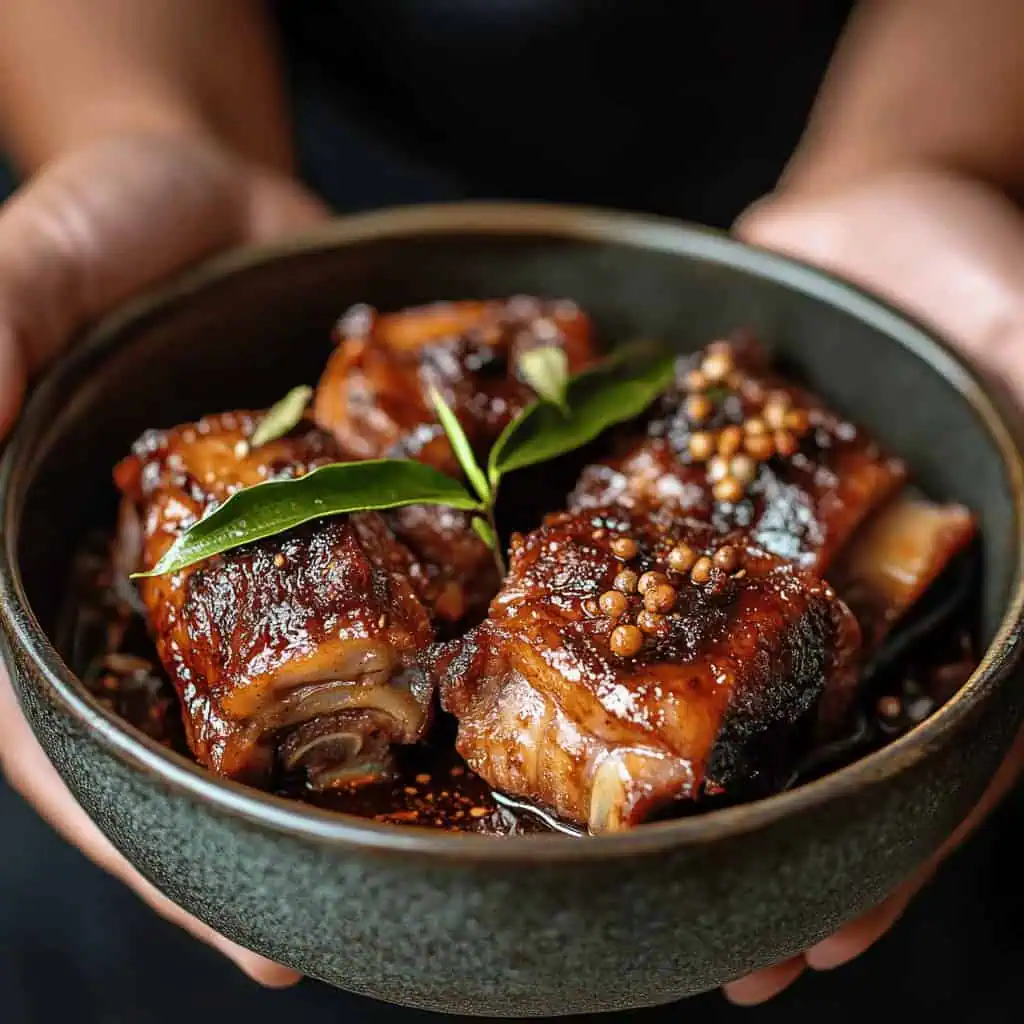
FAQ
Why is my pork still tough after 2 hours?
Different cuts and sizes may require different cooking times. Continue cooking until the meat is fork-tender. You can't really overcook this dish - the longer it simmers, the more tender it becomes.
Can I make this in an Instant Pot or pressure cooker?
Yes! Pressure cook for 45 minutes with natural release. You'll still want to brown the meat first and reduce the sauce after pressure cooking.
Is it normal for the vinegar smell to be strong initially?
Yes, it will mellow significantly as it cooks. Don't skip the initial boiling of vinegar without stirring - this helps remove the harsh acidity.
Can I make this ahead for a party?
Absolutely! The flavors actually improve overnight as they meld together. Reheat gently before serving.
How do I know when it's done?
The meat should easily fall off the bone when pierced with a fork, and the collagen-rich skin should feel tender and gelatinous.
Can I add vegetables to make it a complete meal?
Yes! Traditional additions include baby bok choy or sliced cabbage added in the last 5-10 minutes of cooking.
What can I do if I can't find dried banana blossoms?
While they add authentic flavor, you can omit them or substitute with dried lily flowers found in Asian markets.
My sauce separated after refrigeration. Is this normal?
Yes, the fat will solidify on top when chilled. You can either remove it for a leaner dish or mix it back in when reheating.
Related
Looking for other recipes like this? Try these:
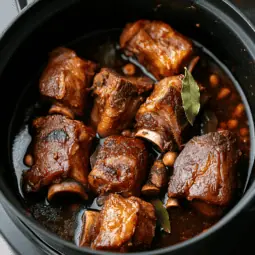
Paksiw na Pata (Filipino Braised Pork Hocks)
Equipment
- Large heavy-bottomed pot (kaldero) For even heat distribution and preventing burning
- Sharp knife (kutsilyo) For scoring the pork skin
- Tongs [Sipit] For safely turning hot meat
- Measuring cups and spoons (Panukat) For accurate measurements
- Wooden spoon (sandok na kahoy) For stirring without scratching the pot
Ingredients
For the Main Dish
- 2 pounds pork hocks pata, cut 2-inch thick
- 1 cup white vinegar suka
- ½ cup soy sauce toyo
- 2 cups water tubig
- ¼ cup brown sugar asukal na pula
- ½ cup dried banana blossoms puso ng saging
- 1 tablespoon cooking oil mantika
For the Aromatics
- 1 large onion sliced (sibuyas)
- 6 cloves garlic minced (bawang)
- 2 bay leaves dahon ng laurel
- 1 teaspoon whole peppercorns paminta
- Salt to taste asin
Instructions
- Clean pork hocks thoroughly and score the skin in a crosshatch pattern (Linisin ang pata at guhitan ng crosshatch pattern ang balat). Pat dry with paper towels. Allow meat to reach room temperature.
- Heat oil in a large heavy-bottomed pot over medium-high heat (190°C/375°F). Brown pork hocks on all sides until golden, about 5-7 minutes per side (Iprito ang pata hanggang maging golden brown). Remove and set aside.
- Reduce heat to medium (165°C/330°F). In the same pot, sauté minced garlic until fragrant, about 1 minute (Igisa ang bawang hanggang mabango). Add sliced onions and cook until translucent, 3-4 minutes (Idagdag ang sibuyas at lutuin hanggang malumbot).
- Return pork to pot and add vinegar. Bring to a boil without stirring for 3-4 minutes (Ibalik ang pata sa kaldero at idagdag ang suka. Pakuluin ng hindi hinahalo). Add soy sauce, water, bay leaves, and peppercorns.
- Reduce heat to low (140°C/285°F). Cover and simmer for 1.5-2 hours (Pakuluan ng mahina), checking liquid levels every 30 minutes. The meat should become fork-tender (Dapat malambot na ang karne).
- Add brown sugar and dried banana blossoms. Increase heat to medium-low (150°C/300°F) and simmer uncovered until sauce thickens, about 15-20 minutes (Idagdag ang asukal na pula at puso ng saging. Pakuluan hanggang lumapot ang sarsa). Season with salt to taste (Timplahan ng asin).
- Let rest for 10 minutes before serving. Serve hot with steaming white rice (Ihain ng mainit kasama ang kanin).
- For food safety, ensure the internal temperature reaches 165°F/74°C when reheating leftovers (Kapag init-iinitin, siguraduhing umabot sa 165°F/74°C ang init sa loob ng karne).
Tips from Lola's Kitchen
- Choose pork hocks with skin on for better texture
- Don't skip the browning step - it develops deeper flavors
- When adding vinegar, don't stir immediately (hayaang kumulo)
- If sauce is too thin, remove meat and reduce sauce separately
- For extra flavor, add whole garlic cloves during braising
Nutrition
The Story Behind Paksiw na Pata (Filipino Braised Pork Hocks)
Growing up in Filipino households, paksiw has always been our practical answer to preserving food before refrigeration became common. This cooking method, which uses vinegar as a natural preservative, has deep roots in our pre-colonial era when our ancestors needed creative ways to keep meat edible in our tropical climate.
Paksiw na Pata emerged as a brilliant evolution of this preservation technique. While most paksiw dishes traditionally feature fish, our resourceful ancestors applied the same principle to pork hocks – a tough, collagen-rich cut that most would overlook. The long, slow cooking process in vinegar and soy sauce not only preserved the meat but transformed these humble pork knuckles into a dish worthy of fiestas and family celebrations.
What makes this recipe special is the addition of dried banana blossoms, a distinctly Filipino touch that sets our version apart from other Asian braised pork dishes. This ingredient, originally added by home cooks in rural areas where banana trees grew abundantly, adds a unique texture and subtle sweetness that perfectly complements the rich, tangy sauce.
Today, Paksiw na Pata remains a beloved comfort food across the Philippines, from simple carinderia fare to cherished family recipes. Whether served in Manila's bustling neighborhoods or in provincial homes, this dish tells the story of Filipino culinary innovation – how we turned a preservation method into an art form that continues to bring families together around the dinner table.
In many Filipino homes, including mine, the recipe has been passed down through generations, each family adding their own small touches while keeping the soul of the dish intact. Some add pineapples for sweetness, others swear by specific vinegar types, but all versions share that distinctive tangy-savory profile that makes Paksiw na Pata instantly recognizable and eternally comforting.







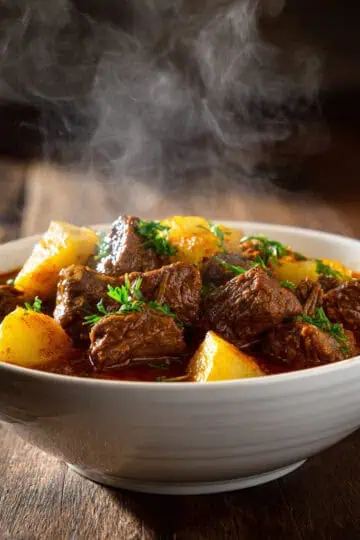
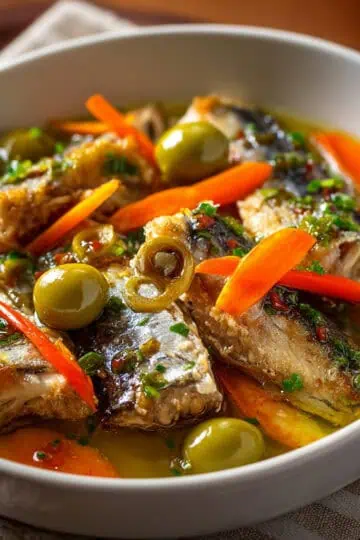
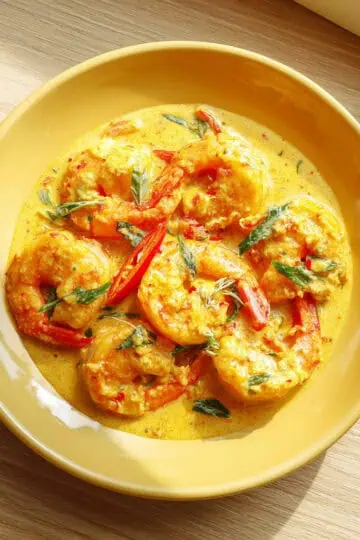
Comments
No Comments